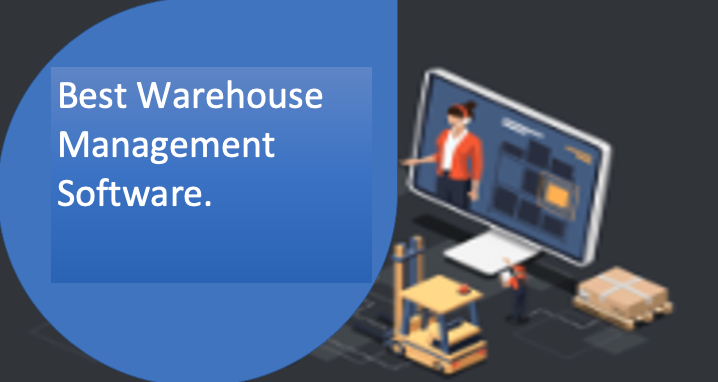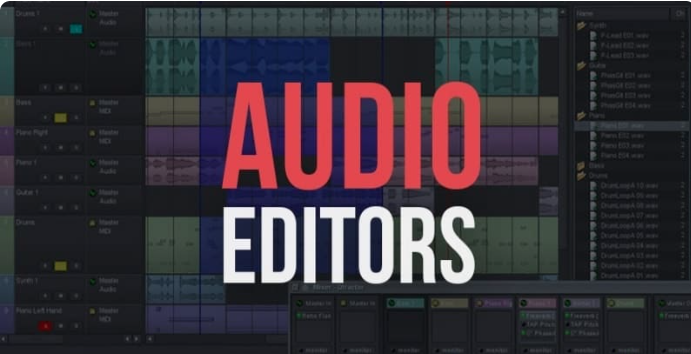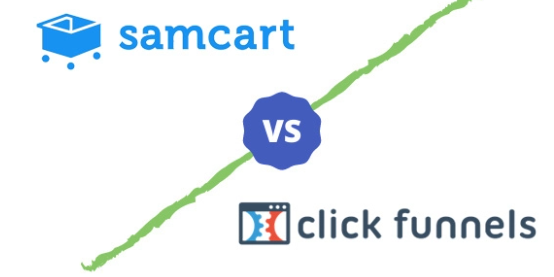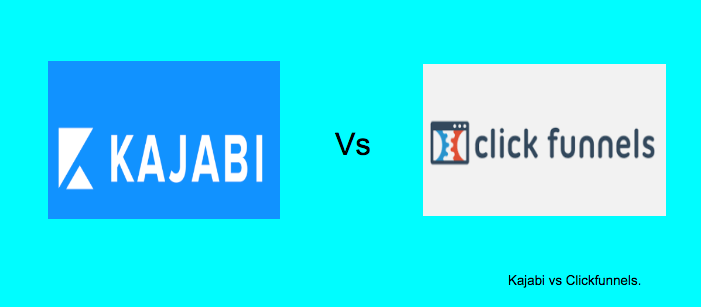Best Warehouse Management Software.
Warehouse Management Software? Well you are in the right place.In modern business, everything is about automation.
You buy products from retail websites, pay for them and you can also return them to if you don’t like them.
Whenever you purchase and return an item, its details are reflected immediately.
Therefore, to fulfil this needs, you require a software which will track all your warehouse operations such as dispatching products, tracking their shipment and sometimes taking it to return.
This is why you need a warehouse management software. This software helps the user to track inventory and suppliers at their comfort zone.
We have researched and analyzed the best warehouse management software for you and now you have a chance to look at their descriptions, features and dislikes.
Let’s dive in:
1.Da Vinci Supply Chain Business Suite.

The Da Vinci Supply Chain Business Suite from Wolin Design Group focuses on giving 3PL partners complete functionality for order, yard, and transportation management.
Additionally, this warehouse Management Software offers powerful customization possibilities and third-party charging support. It includes integrated EDI, online shopping cart functionality, and other elements.
All sizes of enterprises can use it, and it is available on Windows-based operating systems. Users can use its integrated core modules to conduct their routine supply chain and warehousing duties with more efficiency and precision.
Da Vinci is frequently used to manage medications, dry and temperature-controlled food and drink, home products, electronics, apparel and footwear, and footwear.
In addition to barcode scanning, small parcel manifestation, pick and pack, wave processing, smart packing customization, reporting, yard management, and LTL/FTL support, Da Vinci now offers UCC128/GS1 compatibility.
Features of Da Vinci Supply Chain Business Suite.
1.Warehouse Management: The entire feature set of this product’s WMS streamlines and improves regular warehousing operations.
Its WMS tools include guided putaway, pick and pack support, warehouse receiving, SKU and barcode support, kitting, HAZMAT support, and more.
To make sure they have the features they need without paying for more, users can pick between various versions of this suite. Multi-warehouse environments are also supported.
2.Intelligent Insights: With tools that measure and report warehouse procedures and labor statistics, the Da Vinci Supply Chain Business Suite offers users relevant insights.
Users can monitor crucial KPIs to make sure their operations are running well and utilize forecasting tools to create future-oriented initiatives.
Additionally, users of this system have the option to choose between pre-defined and custom reports.
3.Transportation Management: These functions make sure that trucking routes are planned efficiently to conserve resources.
They are also capable of handling transportation drayage, obtaining driver signatures, and managing driver settlements.
4.Mobile applications: Users can sign in and view all of their information using tablets, linked computers, mobile devices, and commercial barcode scanners.
5.Yard Management: To improve shipping accuracy and punctuality, this system assists customers in managing outgoing and arriving freight carriers.
Delivering on-time outcomes to customers and clients requires swift truck entry and exit from their docks with the appropriate shipment. Support for cross-docking and transloading is also included.
6.Order management: This service offers sophisticated filters for purchase orders, order replenishment, warehouse replenishment, and more.
With the aid of practical solutions that simplify and improve time-consuming sales and purchase ordering operations, purchasing accuracy and speed can be increased.
Pricing for Da Vinci Supply Chain Business Suite starts at $179/month/user.
2.Manhattan warehouse Management Software.

To streamline daily operations, Manhattan warehouse Management Software is implemented both locally and via the cloud. Artificial intelligence (AI) and advanced algorithms promote productivity and organization across the supply chain.
Supply, demand, labor, slotting, automation, etc. are all supported by this unified supply execution module. By synchronizing and coordinating activities, it offers same-day and next-day orders and maximizes dock orders.
Utilizing simple operations, it provides responsive user experiences. Supply chain managers can carry out inventory management tasks and carry out order fulfillment with the aid of Manhattan WMS.
Its solutions support the optimum use of all warehouse resources; including personnel, robotics, and automation.
The Order Streaming features of Manhattan WCS enable simultaneous optimization of throughput and fulfillment on a single platform.
Customers can effectively manage space, manpower, and inventory at fulfillment facilities thanks to its responsive user interface. In addition, system security is maintained, standards compliance is maintained, and other requirements are followed.
Features of Manhattan Associates WM.
1.Slotting Optimization: Use cutting-edge slotting functionality to improve product arrangement across the warehouse. To improve picking effectiveness and enhance throughput, it identifies the ideal slot positions.
2.Deployment: Offer both on-premises and cloud-based deployment techniques. Offer mobile access via cloud-based solutions and rapid updates without system shutdowns. Additionally, it aids in storing and recalling crucial operating records.
3.Streaming in order: By providing real-time alignment between available inventory and orders to fill, assets can be used as efficiently as possible. To prevent process duplication or separation, it automatically selects between wave and waveless processes.
4.Multi-tenant Fulfillment: Simplify operations for managing several tenants as well as omnichannel fulfillment. These qualities can be used by 3PL companies to improve their routine operations.
5.Cycle counting: Features for cycle counting that have been auditor-approved saving warehousing operations both time and money. Clients can easily complete cycle counts without having to rely on physical counts, freeing up staff members for other, more crucial activities.
6.Information Capture Automation: Utilize mobile devices, handling tools, and speech recognition software to automate the capture of essential product and equipment information.
7.Yard management: Organize and maximize the space in yards to make sure that vehicles are in the proper place at the appropriate time. It plans load arrivals so that unloading goes smoothly.
Manhattan Associates WM Dislikes
- Before shipments, users are unable to print or email copies of receipts to consumers.
- For put away restrictions, customizations are not possible.
- Unable to follow the flow of products produced on-site or by outside vendors.
- Does not provide reporting, activity dashboards, or business intelligence.
- Does not support operations like managing labor or payments.
3.Infor warehouse Management Software.

Infor warehouse Management Software provides innovative features and solutions that adhere to industry standards.
It unifies labor management, 3PL billing, transportation management, and inventory management into a single, scalable database.
Consumers are allowed to make better business decisions, and warehouse operations become less difficult. It was created using the cloud and is intended to give users immediate access to information about logistics and customer service.
Its integrated strategy lowers inventory costs for clients, gets rid of bottlenecks, and facilitates work prioritization.
Advanced features like Web RF, 3D visual warehousing, and audio processing are made possible by the modern user interface in conjunction with an open API structure, allowing you to handle numerous channels (B2B/B2C) from a single warehouse.
The Gartner Magic Quadrant for Warehouse Management Systems identifies Infor CloudSuite WMS as a Leader.
Among the advantages are decreased operational costs, improved inventory visibility, just-in-time inventory, inbound and outbound optimization, effective worker utilization, increased security, and improved connections with customers and suppliers.
Features of INFOR WMS.
1.Task Management: Task allocation and workload balancing are made possible by the task management system. Assists in B2C and B2B fulfillment while prioritizing tasks by dividing orders and locations into batches for prompt shipment.
2.3D Visual Warehouse: Using the interactive and embedded interface of the 3D Visual Warehouse, you can transform warehouse operations by viewing workflows, high-risk inventory, and bottlenecks.
3.Labor management: Ensures that staffing metrics, workforce planning, and execution capabilities are coordinated to maximize worker performance. Enable feedback and monitoring of both direct and indirect labor.
4.3PL Billing: Intuitive solutions, such as customer-level costing, billing, and invoicing, are combined in a single system by 3PL billing to provide agile fulfillment. Integrates workflows and traceability to support multi-owner and multi-warehouse operations.
5.Inventory management: involves keeping track of inventory and optimizing delivery accuracy for orders. Keep an eye on and track the raw materials, components, location, and state of the goods. To increase visibility and flexibility, track date codes, serial numbers, inventory aging, lot control, and expiration dates.
6.Voice Direction: Voice-activated technology enables hands-free operation for users. Order selection, transfers, put-aways, receiving, and replenishment all make use of speech recognition. To increase order accuracy and productivity, do away with the need for manual labeling, listing, and scanning.
7.Slotting: Manage slots and arrange SKUs according to the closest set of pick faces to cut down on travel time. Increases picking speed and accuracy to maximize warehouse space.
INFOR WMS DISLIKES
- External add-on packages are necessary.
- Prolonged loading time.
4.INFOPLUS.

A cloud-based software program called Infoplus was developed to combine and simplify inventory, order, and shipping administration for numerous warehouses and numerous clients utilizing a single platform.
Using adaptable templates and automation to grow operations, Infoplus manages distinct workflows for several business lines. One of the key characteristics is the ability to handle various business lines’ distinct workflows using a unified software platform.
Create different manufacturing procedures that are compatible with all iOS and Android-based devices. For handling eCommerce bundles and flash sales, light manufacturing with “print on demand” capabilities and Kit On Demand functionality is used.
Give your company the ability to scale based on the ability to meet the next requirement, issue, or business shift with a few mouse clicks.
To ensure that a WMS drives the warehouse operation that is suitable for you and your clients, implementation specialists assist each warehouse in setting up a unique workflow with industry knowledge.
Features of INFO PLUS.
1.Information Management: Infoplus gives its users total insight and management over their inventories. Users can monitor inventories and stock movements across a variety of geographies with the use of real-time stock-level alerts, lot control, and inventory modifications.
2.Order management: Infoplus automates and controls order processing and fulfillment based on their priority level, with a rapid turn-around and increased efficiency for its users.
3.Warehouse Management: Using capabilities including automation, inbound receiving, picking, packing, and shipping, Infoplus helps users manage their end-to-end warehouse operations.
4.Purchasing: The Infoplus purchasing tool helps users to manage purchase requests, supplier bills, and reorders as well as keep track of suppliers and products.
5.Connectors: Infoplus offers pre-built integrations with financial tools, channel partners, e-commerce carts, shipping partners, and EDI. Additionally, an open API is available for simple partner integration.
6.3PL Management: Infoplus’s permission-based roles and data access enable users to manage 3PL clients completely and simply.
5.SOLOCHAIN WMS.

Generix Group’s SOLOCHAIN warehouse Management Software offers real-time insights to enhance supply chain management in a variety of industries.
It streamlines inbound and outbound operations using native MES and provides total inventory visibility. With ERP and other internal system components, it integrates without a hitch.
Through web services, SOA, and XML formats, it also offers real-time synchronization. While meeting all company needs, it provides SaaS, on-premise, and cloud deployment.
SOLOCHAIN WMS satisfies a variety of regulatory and lean-driven industry needs, where software performance is determined equally by the speed and caliber of implementation.
The following are only a few of the sectors catered to food and beverage, pharmaceutical and medical, consumer packaged goods, automotive and aerospace, discrete process manufacturing, e-commerce, retail / multi-channel distribution, asset-based company, and third-party logistics.
Additionally, for businesses that carry out any kind of product transformation (manufacturing, assembly, product kitting, etc.), a fully native Manufacturing Execution System (MES) can be integrated with SOLOCHAIN WMS for complete inventory visibility from inbound, transformation, and outbound tasks & processes.
Features of SOLOCHAIN WMS.
1.Interactive Dashboards: Utilize user-friendly interfaces to create simple dashboards for managing workflows and procedures. gives users with little programming experience quick access.
2.Inventory management: Plan and coordinate the flow of goods into and out of the warehouse, as well as their storage. By controlling and following orders from B2B and B2C sources, quality assurance and refunds can be improved. Utilize a back-office integrated project management system to provide transparency and real-time task management.
3.Cycle counting: Give warehousing operations visibility and control over daily processes. Detects out-of-sync inventory errors and provides users with information on correction measures that increase overall efficiency.
4.Mobile Process Configurator: Configure mobile workflow and processes using the mobile process configurator to get complete visibility into the configuration tags, data model, and page layouts. Utilizing low-code extensibility, you may set up business rules, reports, desktop pages, and workflow procedures according to operational needs.
5.Traceability and Recall Reporting: Track specific data for each item throughout the lifecycle of the product, such as lot numbers and raw components. Permit manufacturers to track products both forward and backward so they may report any problems.
6.Warehouse Mapper: Real-time tracking and management of inventory during receipt, packaging, storage, and delivery. Manages product storage needs while preserving customer security. Additionally, it locates and chooses the spaces that are appropriate for storage.
7.Barcode and Serial Tracking: Give packages barcodes and serial numbers. To improve picking efficiency and accuracy, display pertinent product information.
8.Yard Management: Arrange incoming and outgoing shipments such that trucks and pallets are in the most advantageous positions.
9.Billing: To maintain precise and error-free accounting procedures, billing supports financial processes. To free up personnel for more important work while reducing human mistakes, automate laborious billing processes, and reduce manual input.
SOLOCHAIN WMS DISLIKES
- Support may be sluggish.
- It could take a while to configure processes and workflows.
- Integration costs are considerable.
6.Highjump warehouse management software.
An agile and scalable management solution is offered by the platform known as HighJump Software.
While offering cloud-based automation and organizing features, this program focuses on expanding alongside your warehousing operation. With tools for labor management and role-based job direction, it also helps you save costs.
This platform provides 3PL providers with the resources they need to successfully manage multi-client warehouse operations and interact with your preferred ERP program.
The focus of out-of-the-box features is on optimizing your overall warehouse operation while lowering risks and minimizing errors.
Features of High Jump Warehouse Management Software.
1.Warehouse Automation: No matter what kind of product is being transported or what equipment is required, HighJump Software’s Warehouse Control System can help automate your material flow throughout the warehouse.
For managers to make wise decisions, clients who use automation can obtain crucial visibility into their warehousing operations.
2.Labor Management: Planning, monitoring, and reporting labor duties, as well as keeping track of team member performance, are all possible with the help of the labor-management platform.
By tracking indirect labor, Highjump Software assists in cutting down on wasted time.
3.Omnichannel Fulfillment: To keep up with the retail market’s ongoing expansion, warehousing operations need the right equipment.
The omnichannel fulfillment capabilities of Highjump Software enable clients to maintain flexibility and support operations that address the range of ways customers acquire their products.
4.Inventory Control: Keeping track of your goods is essential in the warehousing sector. To ensure that customers never run out of items to supply and that they can reduce stock in their operations, Highjump Software gives you insight across your whole warehouse.
5.3PL Support: A 3PL’s support HighJump Enterprise 3PL provides a provider with all they require to be successful in the cutthroat multi-client warehousing market thanks to a solution created by 3PL specialists.
There are tools for cold storage, omnichannel seasonality, e-commerce, and other things.
HIGHJUMP DISLIKES
- BI and reporting functionality are not supported by HighJump Software.
- Integration with CRM platforms like Salesforce is not supported by HighJump Software.
- Distributors are not permitted to utilize an automated material handling device to enable the integration of all materials into a single-face solution by the solution.
- Card processing and POS integration are not supported by HighJump Software.
- The company does not offer users strong customer support or post-sale knowledge.
7.SPHERE WMS.
With SphereWMS, a cloud-based solution, you can manage several locations, your inventory, your shipments, and your refunds all from one centralized site.
To manage end-to-end warehouse operations for its users effortlessly, SphereWMS eliminates paper-pushing and minimizes manual tasks. It is also accessible via iOS and Windows phone applications.
On-hand, in-transit, and on-order visibility are among the inventory management features, as are controlled by inventory accounts, bin locations, lot numbers, pallet/case IDs, and serial numbers.
The system offers the in-the-moment data required to monitor the amount, location, status, and history of inventory items inside a warehouse.
By incorporating clients’ business requirements directly into the workflow and putting in place order fulfilment solutions catered to their needs, SphereWMS enables users to streamline their whole order process.
The Ad Hoc Report tool enables users to create their reports without any prior experience, and it can automatically save, schedule, and disseminate these reports.
Every transaction can have attachments of various file kinds, including images, thanks to the integrated document management system. The company’s current ERP may be fully connected with SphereWMS, which also provides the cross-platform capability.
Feature of sphere warehouse Management Software.
Dashboard: The SphereWMS dashboard feature gives customers real-time access to both incoming and outgoing orders, processes, and goals, which can help with labor planning and productivity targets.
Ad-hoc Reports: The reporting functionality of the SphereWMS offers pre-defined reports on order management, inventory, and shipments that may be utilized as-is or readily customized to match clients’ needs. These point-and-click reports can be made public for 24/7 access or kept private for limited access to share with clients.
Inventory management: SphereWMS gives clients access to real-time information about the quantity, location, status, and past of any inventory item in their warehouse.
Order fulfillment: By using outbound processing features and full-cycle visibility provided by SphereWMS, customers may monitor the progress of their order fulfillment processing in real-time and uphold transparency by providing distributed performance reports to their partners and clients.
Pick-to-Light: SphereWMS improves order fulfillment accuracy and efficiency by integrating with cloud display devices, supporting pick and put-walls, kitting, racks, and more.
Receiving and Put Away: Based on the user’s predetermined rules and warehouse flow, SphereWMS handles receiving and put-away functions by streamlining the transportation of received goods from the shipping dock to the storage location.
Integration: SphereWMS offers its users pre-built integrations with carrier and last-mile delivery providers, e-commerce websites, online shopping carts, and ERP/Accounting systems for end-to-end warehouse management.
On behalf of suppliers to retail consumers, it also offers EDI connectivity.
Summary.
Now that you have reviewed our best warehouse management software, it is all up to you to choose the best software that will automate your delivery system.
Otherwise, we can say that Da Vinci Supply Chain Business Suite and Manhattan Associates are the best options.However, if you want to customize your workflow then SphereWMS will do that for you.







